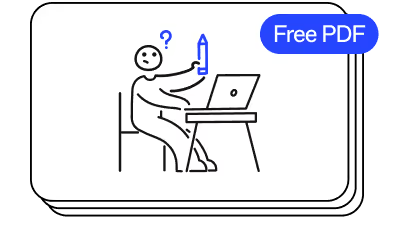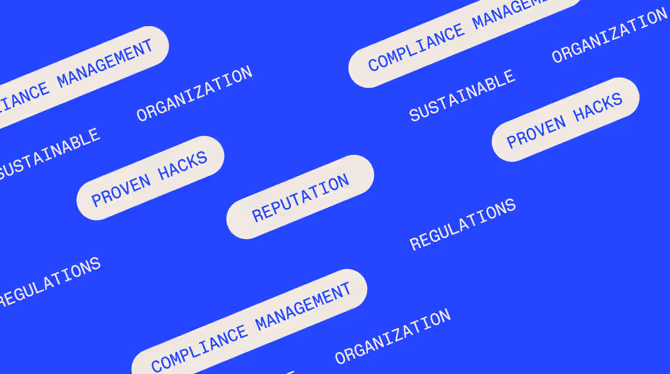How to fire an employee legally and respectfully

Addressing poor performance template

Great leadership means doing what’s right for your people and company. Unfortunately, that sometimes includes the not-so-fun job of figuring out the best way to fire someone.
The real challenge is knowing how to fire an employee without crushing your team’s morale or violating legal policy. Do it right and you’ll protect your culture, credibility, and conscience, all in one very important conversation.
When to consider firing the employee
If you’re considering employee termination, you need written, clear reasoning. This means documenting the employee’s written warnings, performance improvement plans (PIPs), and performance reviews. Documentation helps protect you from wrongful termination claims and keeps the firing process compliant with both company policies and local laws.
Here are eight common reasons for termination.
1. Performance
If someone’s constantly missing deadlines and ignoring feedback, performance is the problem. When this escalates from a couple bad days into a pattern, it’s time to have a conversation.
Start with a PIP and set measurable goals with the employee. If nothing changes, that’s a valid reason to terminate.
2. Conduct
Poor conduct can sink a team fast. Whether it’s disrespect, dishonesty, or creating tension, misconduct creates a hostile work environment.
Firing an employee for inappropriate actions is legitimate and protects your company culture. That said, don’t forget to document the incidents and deliver clear feedback first.
3. Workplace attitude
A bad attitude is a lot like the flu: contagious and draining. If someone’s negativity spreads or they regularly resist collaborating, that’s more than just one isolated off day.
Record specific examples of the team member’s poor behavior and discuss them in one-on-one meetings. If things don’t improve, you might have to terminate the problem employee to restore the team’s morale.
4. Defiance
Insubordination is a breakdown of respect. If an employee repeatedly ignores your directions or challenges your leadership, it’s time to act. After multiple written warnings and documented incidents, terminating the employee may be the best decision.
5. Punctuality and attendance
When “running late” becomes a habit, your employee’s productivity tanks. Every organization has attendance expectations, and violating company policy in this area can justify termination.
Keep detailed attendance records to see if there’s a pattern, and be sure to discuss expectations with the employee if you have concerns.
6. Harassment
Harassment is a breach of trust and bad behavior. If someone intimidates, bullies, or disrespects others, it’s time to investigate the situation immediately.
If the complaints are verified, firing the employee protects your workplace from further disruptions. It also sends a clear message of zero tolerance to other employees.
7. Sexual misconduct
There’s no gray area here: Sexual misconduct must be addressed immediately, thoroughly, and within legal bounds.
Document all evidence carefully. Once the facts are verified, termination should follow without delay. Failing to act not only jeopardizes team trust but also breaches your company’s legal and moral duty to maintain a safe workplace.
8. Safety breaches
Safety rules exist for a reason. If someone repeatedly breaks protocols or refuses training, that’s grounds for termination.
Confirm the details with witnesses, and follow up with a formal termination letter to explain what went wrong.
How do I fire someone?
Termination isn’t an easy task. But when done properly, it protects your people and your company culture.
If you’re wondering how to professionally fire someone, the tips below will help you confidently lead the charge.
Know your company policy
Learning how to fire employees legally means knowing your company’s termination policy and local labor laws. Every business has their own employee termination process, which must be available to all staff via the employee handbook.
Confirm you’re aligned with local labor laws and internal procedures, including following requirements for notice periods and termination letters. Not following proper legal steps is a common reason for workers to claim wrongful termination and discriminatory practices.
Confirm that termination is the right call
Pause before you move forward and consider: Have you provided extra training for skills gaps? Have you used disciplinary measures like written warnings to give the employee a chance to course-correct? If you’ve provided enough support and still see no progress, firing an employee is a reasonable next step.
Share a clear performance assessment
Before you finalize the termination, make sure the person sees how and where they’ve fallen short. Walk through their PIP, if applicable, and share the documented feedback. Openly discuss the employee’s performance metrics and unmet goals. Transparency may help the employee accept and understand the termination decision.
Know what should be prepared before the termination meeting
Gather all your documentation ahead of time, including the company policy, attendance logs, witness notes, incident write-ups, and the termination letter. The last thing you want is to waste time digging through folders when emotions are running high.
Choose your setting wisely
Prioritize privacy when selecting a spot for the termination meeting. It’s best to choose a quiet, neutral location, like a small conference room. Avoid public areas and places where other people might overhear. Privacy maintains the employee’s dignity and keeps office gossip from getting out of hand.
Bring a neutral witness
When you’re terminating an employee, always have another HR specialist or senior leader with you. Their presence leads to better accountability, and they can take notes to make sure everyone’s voice gets heard. If questions ever come up about what was said and done during the termination, a witness makes sure it’s not your word against the employee’s.
Be clear, concise, and compassionate
How should the termination meeting be conducted? When it begins, get straight to the point. Let the person know their employment is ending on respectful terms. Avoid jargon like “restructuring” and “transitioning.”
Then, give the employee a chance to respond. Listen to their thoughts, and be kind and professional throughout the interaction.
Don’t blindside the employee
Termination meetings shouldn’t come as a total surprise. If this is the first time leadership is making the employee aware of serious concerns, you’ve likely skipped pivotal steps in the process.
The employee’s issues should be known, documented, and previously discussed. Consistent communication about their performance keeps your HR processes airtight.
Stand firm on the decision
Once you’ve terminated the employment contract, don’t waffle. Don’t offer false hope by saying things like, “We might reconsider” and “maybe we can revisit this later.” Reinforce that you’ve made this decision in line with the company policy and applicable laws.
End the termination meeting with empathy
End the meeting on a professional note by thanking the employee for all their hard work and acknowledging the difficulty of the situation. Hand over their documentation, and tell them what happens in next steps.
Handle post-termination details smoothly
There are a few logistics to handle after firing employees, such as revoking the employee’s system access. Be sure to request their company equipment back, including laptops or other items that the employee has for working from home.
Here’s a tip for firing employees that can help you avoid more problems in the future: Conduct an exit survey to find out what they really think. Use their feedback to make changes to boost your company culture and reduce employee turnover.
What steps should be taken after an employee is terminated?
The hard part’s over. You’ve handled the termination conversation, and now it’s time to tie up loose ends like an HR pro. A clean exit protects your company while giving the terminated employee closure.
Talk severance
Decide if you’ll offer a severance package or severance pay, and put the decision in writing. Severance is optional, but it can ease the tension and help the transition feel more human while also avoiding a lawsuit.
Pay what’s owed
Deliver the employee’s final paycheck ASAP. If required by the law or company policy, be sure to pay out any unused vacation time or PTO. Make sure paychecks are sent out promptly; late payments reflect poorly on your business and may violate labor laws.
Clarify employment benefits
Explain how long the employee’s benefits will continue, including any health and wellness benefits. If they have the option to continue coverage, explain how to get it.
Help them claim unemployment
After termination, consider offering extra support by walking the employee through unemployment benefits in your area, and offer to help them file. If they need documentation from you, provide it promptly.
Want to keep the process fair and drama-free? Use a structured offboarding checklist to protect your company legally.
Lead better with Workleap Officevibe
Managing employee termination isn’t just about ticking boxes for HR. When you fire an employee by the book, you protect your company culture, reduce legal risk, and prove that respect doesn’t end with employment.
To keep everything in your organization running smoothly, use Workleap Officevibe. Our platform gives employees and managers an anonymous space to share and respond to feedback that provides visibility to what’s working and what’s not.
Officevibe uses surveys to track important metrics like team sentiment and peer relationships, so your leaders can turn feedback into action. This means stronger one-on-ones, happier people, and fewer exit interviews, creating a better, longer-lasting experience for both employees and employers.
Ready to reduce turnover and strengthen your leadership culture? Book a free demo to see how Workleap can help.
Give HR and managers the clarity, confidence, and connection to lead better every day.


%20(1).avif)


.avif)
.avif)
%202.avif)



.png)
